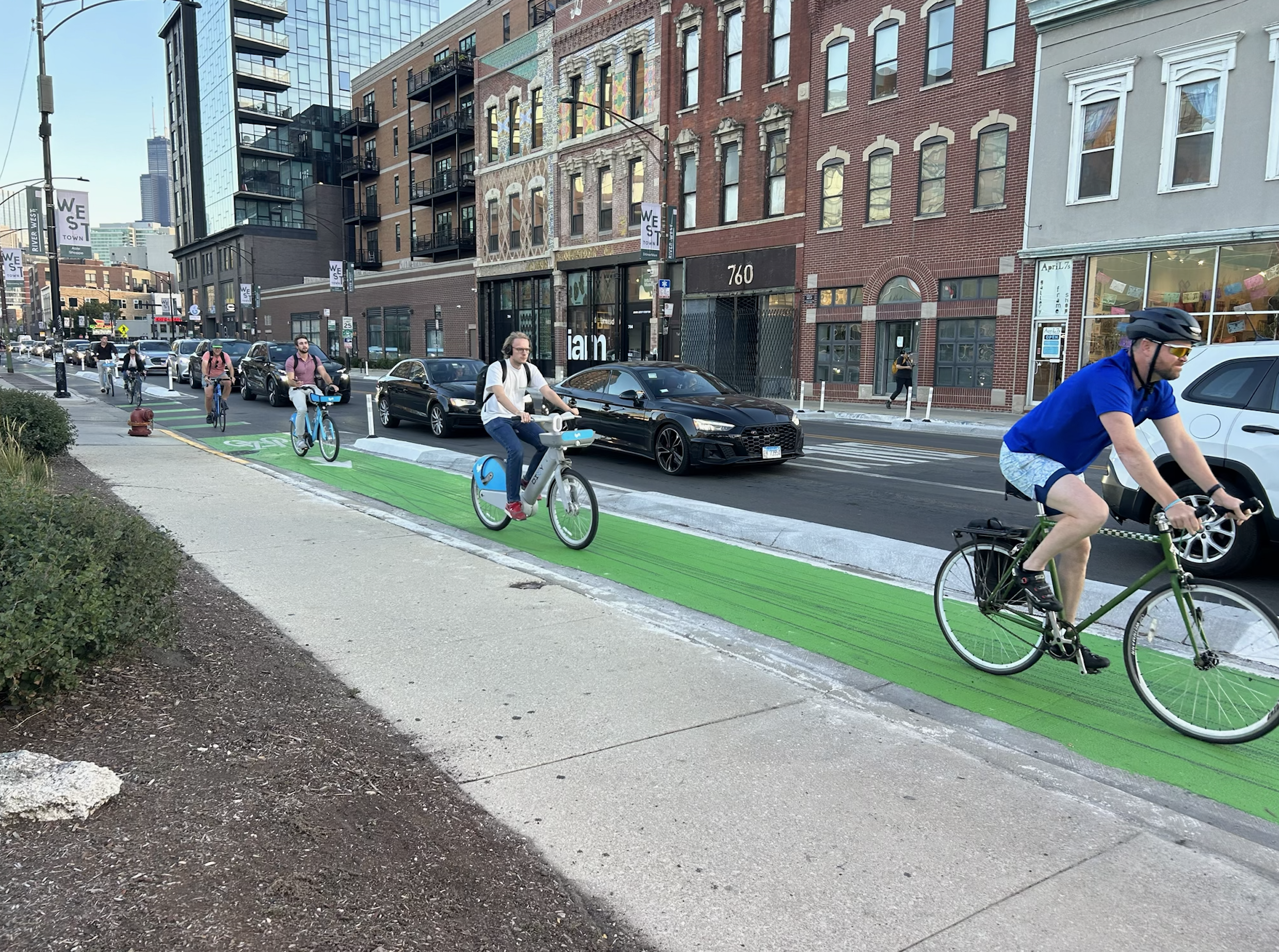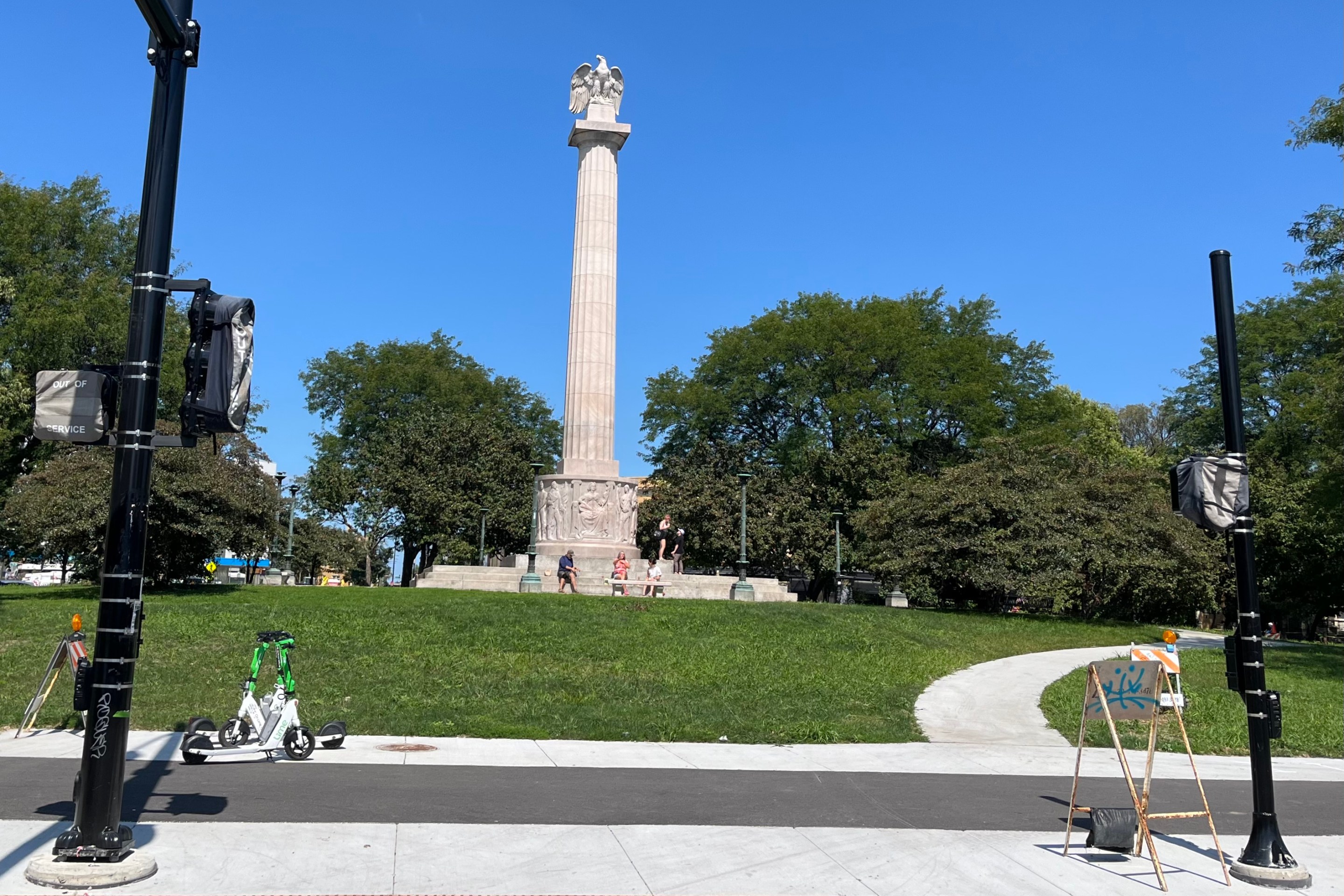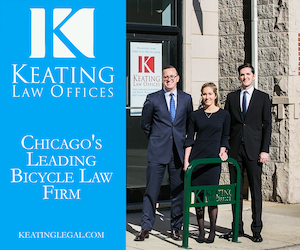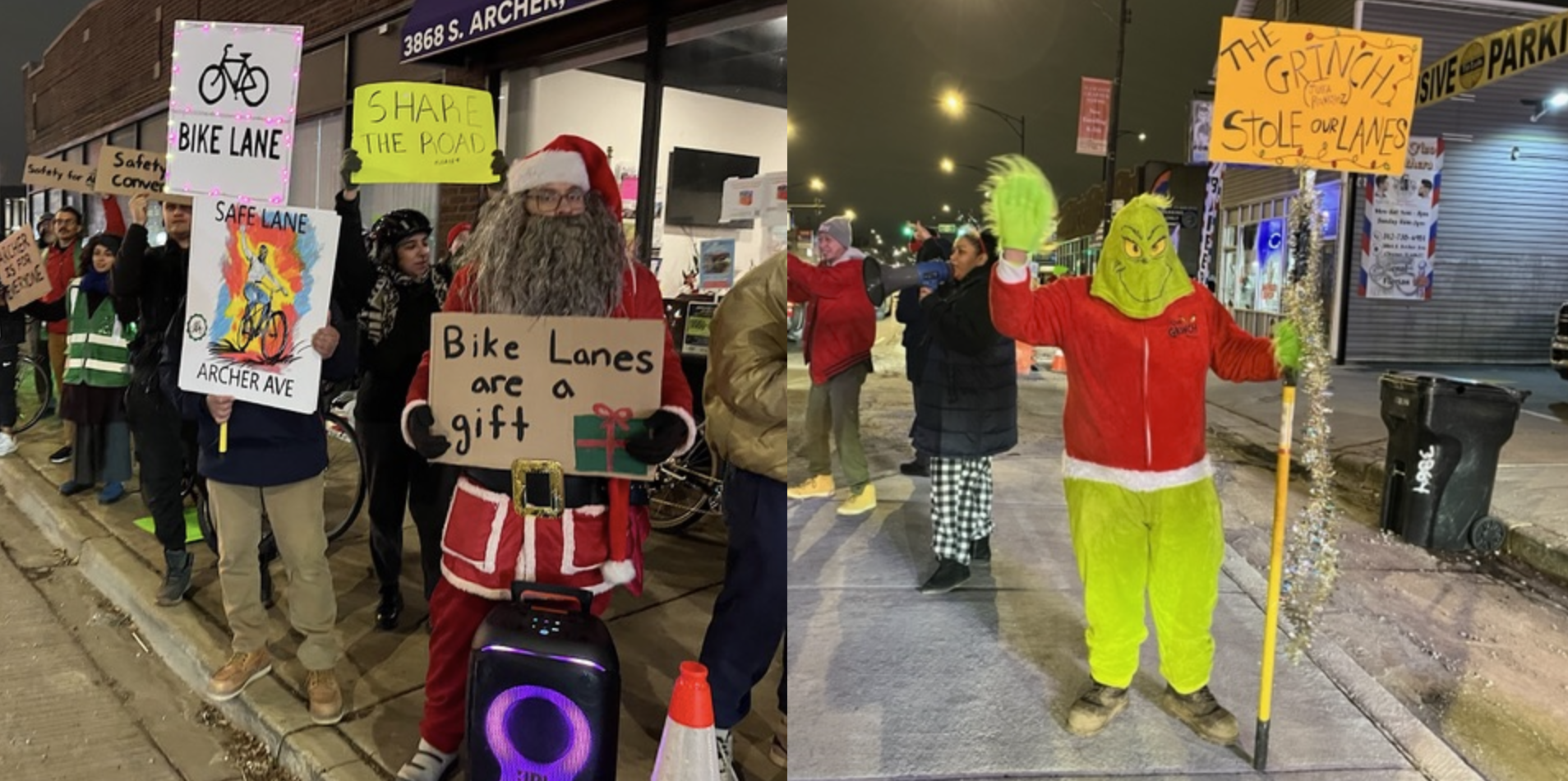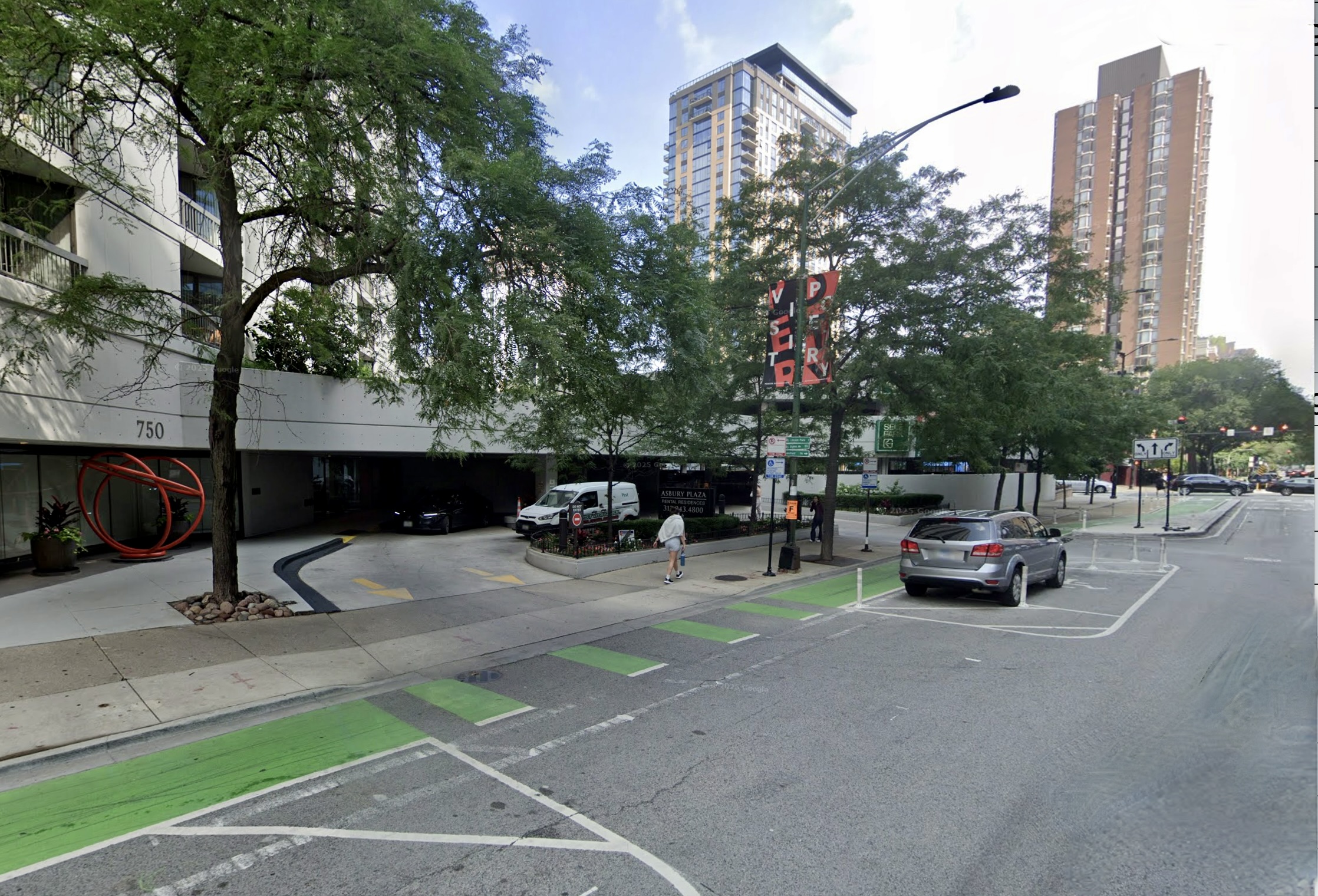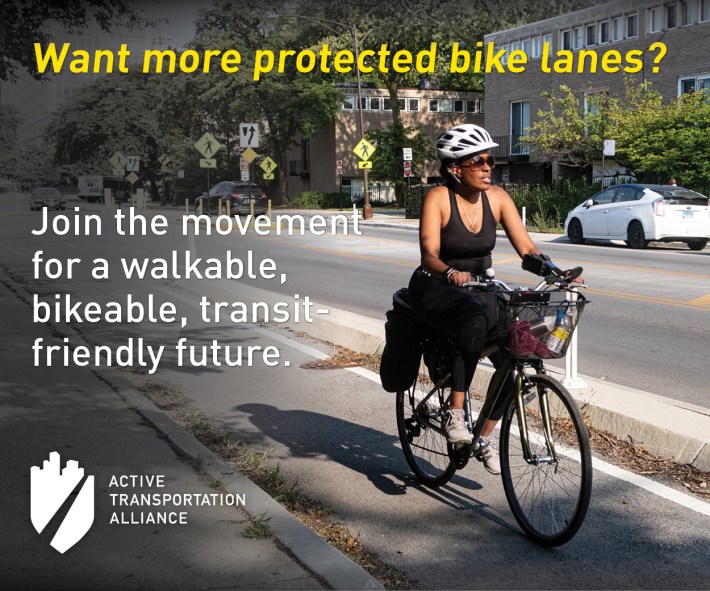
Last December, the Chicago Tribune Editorial Board blamed the diagonal Milwaukee Avenue bikeway for traffic jams created by car commuters fleeing Kennedy Expressway construction. "[On] many of the former alternate routes, such as... Milwaukee [the Chicago Department of Transportation has] reduced... vehicular capacity by adding bike lanes," they stated. "Those roads don’t offer any meaningful relief from a clogged expressway anymore."
One might have assumed they were complaining about a recent street layout change. But in reality, the Milwaukee "road diet" in River West was already completed by 1998, back when current 35th Ward alderperson Anthony Quezada was two years old. Maybe it's time for the editorial board to move on?
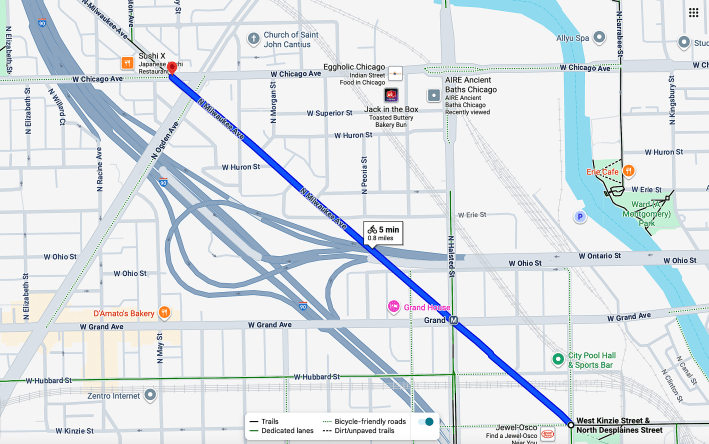
However, I can think of at least one Chicagoan who appears to be a big fan of the recently upgraded protected lanes on the 0.8-mile stretch of Milwaukee between Chicago Avenue (800 N.) and Kinzie Street (400 N.) Last week, as Mayor Brandon Johnson rode a Divvy bike-share cycle up Milwaukee to the ribbon-cutting, he told Trib reporter Jake Sheridan, "Protected bike lanes throughout the city is the ultimate goal." He announced that this segment represented the 100th mile of bikeways the Chicago Department of transportation has installed or improved during his two-year-plus tenure.
“If there’s a group in Chicago that advocates on behalf of anything, it’s the people who are advocating for bike lanes and bikers,” he told reporters. “Your advocacy is paying dividends for the people of Chicago.”Proud to be among the advocates in attendance yesterday. Let's keep making roads safe
— Active Transportation Alliance (@atalliance.bsky.social) 2025-09-24T15:02:52.184Z
Milwaukee has had protected lanes since 2013, which saw pushback at the time because they involved some of Chicago's earliest conversions of car parking spots for PBLs. But twelve years later (time flies when you're reporting on cycling infrastructure!) CDOT has generally made the corridor a few notches safer and more pleasant to ride on, and added perks for pedestrians and transit users as well.
According to the agency's website for the initiative, the work was done as part of a repaving project. "CDOT added additional concrete curb to strengthen the existing protected bike lane, and bus boarding islands to improve transit operations," it states. "The project completely rebuilt the Milwaukee and Erie intersection to make it better organized and more comfortable for everyone."
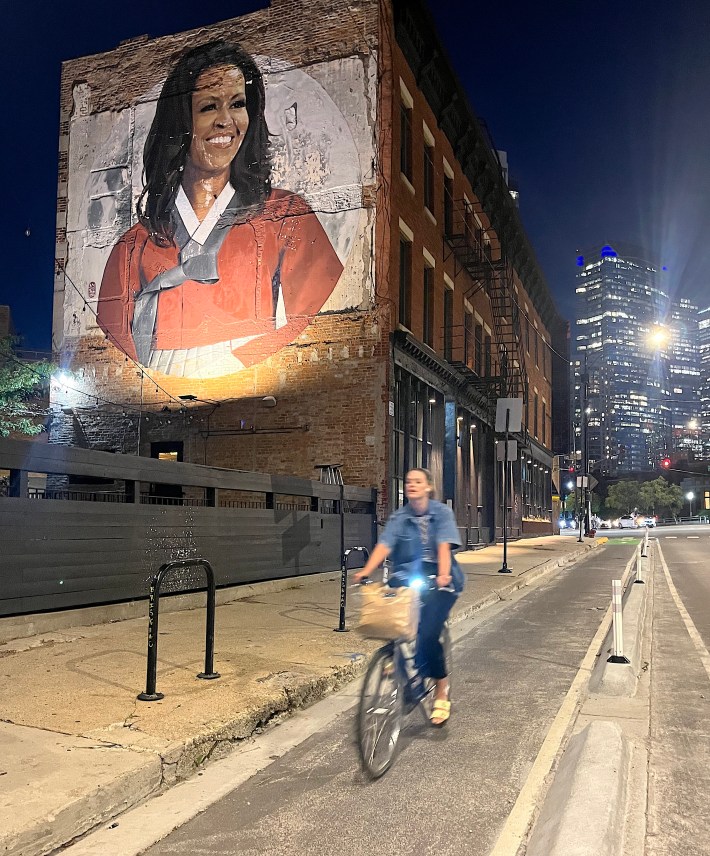
The islands allow bus drivers to pick up passengers without having to pull to the curb, which cuts trip times. New curb bump-outs and pedestrian islands shorten pedestrian crossing. And the remixed street design helps calm motorized traffic, making it less likely any road users will get into a serious or fatal crash, So the new design is a win-win-win-win.

My main critique is that the new design involves an awful lot of large concrete expanses, even in locations with no bus stop. That's obviously a boon for local cement suppliers. But the environmental and aesthetic impacts would be improved if this right-of-way was used to create more green space, although that would require someone to maintain it. At the very least, somebody should spruce up these structures with some planters.
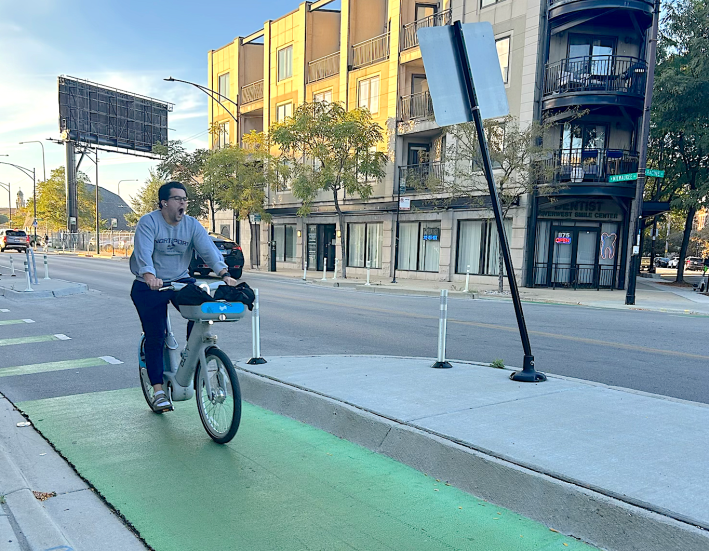
A Streetsblog reader also sent us few other critiques. They objected to the short segment of "floating" paint-only southeast bike lane between Chicago and Ogden (a southwest-northeast diagonal), sandwiched between right-turn and though lanes for drivers. Yes, it is dangerous to force people on bikes to travel between two lanes of motorized traffic.
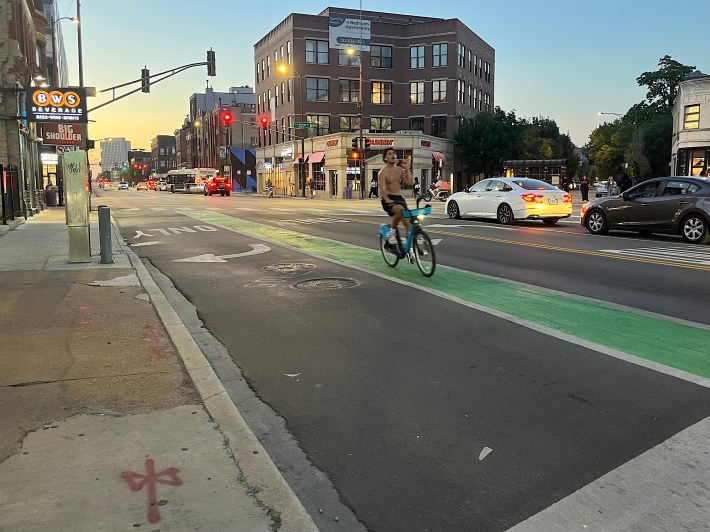
Presumably this layout was done to make it easier for drivers to access a northbound on-ramp for the Kennedy. But it seems that the right solution here would have been a curbside PBL, with a dedicated right-turn signal to allow drivers to safely cross the bikeway when cyclists have a stoplight.
The reader was unhappy that between Green (830 W.) and Halsted (800 W.) streets, the southeast-bound lane is non-protected, and goes to the left of parked cars, instead of vice-versa. Indeed, whenever possible, CDOT's mantra should be "Always use protection!"

One other complaint the reader had is that the southeast-bound lane under the Metra viaduct south of Hubbard Street (430 N.) is not protected. It's unclear why there are no curbs there, or at least flexible plastic posts (which is the case on the other side of the street), since there's no car parking here.

Nowadays, I think CDOT's Complete Streets Program staffers tend to make good decisions about street designs – as long as they're not vetoed by superiors, or car-centric local alders. This project is entirely within the 27th Ward, which until recently was represented by Walter Burnett Jr., who had a mixed record on sustainable transportation matters.
Last week Walter Burnett Jr. was replaced by his son Walter Redmond Burnett, carrying on the long Chicago tradition of mayors appointing a blood relative of the outgoing alder to fill their shoes. Other recent examples of this dubious practice are Dick Mell and his daughter Deb Mell (33rd), and Michael Scott and his sister Monique Scott (24th).
But I digress. I've asked CDOT for the reasons for these design choices, and I'll update the post if I hear back from them.
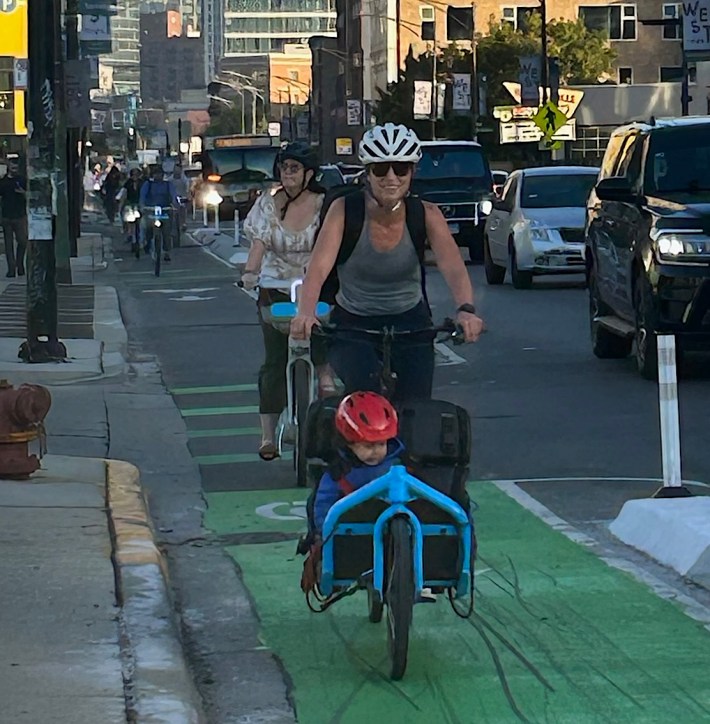
Overall, I think the upgrades to Milwaukee Avenue in River West are a success. And it's good to hear Chicago's mayor says he's also a fan, so hopefully that means a citywide network of connected, protected bikeways will be in our not-too-distant future.
Read the Tribune article about the Milwaukee Avenue ribbon-cutting here.

Do you appreciate Streetsblog Chicago's paywall-free sustainable transportation reporting and advocacy? We officially ended our 2024-25 fund drive in July, but we still need another $43K+ to keep the (bike) lights on in 2026. We'd appreciate any leads on potential major donors or grants. And if you haven't already, please consider making a tax-deductible donation to help us continue publishing next year. Thanks!
